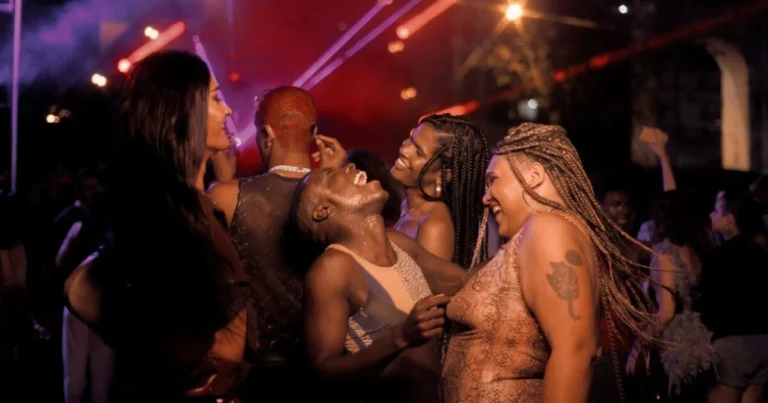For years, I struggled to balance kink and chronic pain. The pain was constant, a gnawing presence that infiltrated every part of my life—my work, my relationships, and most certainly, my sexuality. But whenever I sought help, I was met with dismissals, assumptions, and a frustrating cycle of being told that my pain was ‘normal’ or ‘all in my head.’ It wasn’t until I was in my 30s that I finally received a diagnosis: endometriosis. This diagnosis marked the beginning of my journey to understand how to continue exploring BDSM while living with a chronic illness.
The relief of having a name for what I was experiencing was overshadowed by the anger and exhaustion of knowing how long I had been ignored. Being medically gaslighted for so many years took a toll, not just on my physical health but on my sense of trust in the medical system and even in my own body.
Receiving the diagnosis was a turning point, but it also brought new challenges, particularly in how I approached my kink life. Kink has always been a source of empowerment and exploration for me, but living with chronic pain meant I had to reassess and adapt many aspects of my play. This journey has been about finding balance—honoring my body’s limits while still embracing the parts of kink that bring me joy and connection.
Redefining My Relationship with Kink
Reassessing My Limits
With a diagnosis in hand, I had to face the reality that my body needed different things now. I began to evaluate which activities were still pleasurable and safe, and which ones might need to be modified or set aside. This process of reassessment was difficult but necessary for reclaiming my power and agency within my kink practices. As I navigated the intersection of kink and chronic pain, I realized that living with chronic pain required new approaches to maintain pleasure and safety.
Communication with Partners
One of the hardest parts of this journey has been having honest conversations with my partners about my diagnosis and how it impacts our play. These discussions have been about more than just setting boundaries—they’ve been about vulnerability, trust, and mutual respect. By openly communicating, we’ve been able to find new ways to connect that honor my body’s needs. A “Yes, No, Maybe” list was beyond helpful in first determining my own limits before I could communicate them to partners.
Adapting Your Kink Practices for Chronic Pain
Creative Adjustments When Dealing with Kink and Chronic Pain
The need to adapt my play has led to some surprisingly creative solutions. From using supportive props and cushions to experimenting with different types of scenes that require less physical exertion, I’ve discovered that there are countless ways to engage in kink that don’t compromise my well-being. Adapting kink and chronic pain management has led me to discover creative solutions that make play both enjoyable and accessible.
Embracing Sensual Play
Chronic pain has shifted my focus towards a slower, more intentional exploration of kink. Sensual play, which emphasizes touch, connection, and sensation, has become a cornerstone of my kink life. This shift has not only accommodated my physical needs but has also deepened the emotional intimacy I share with my partners.
Embracing Emotional and Mental Dynamics When Dealing with Kink and Chronic Pain
Non-Physical Power Exchange
As physical limitations became more prominent, I began to explore power exchange dynamics that aren’t centered on physical activity. Verbal domination, mental play, and service-oriented dynamics have opened up new avenues of connection in the realm of kink and chronic pain that are just as fulfilling as more traditional physical scenes.
Mindful Play
Managing pain requires a level of mindfulness that has carried over into my kink life. Being present and intentional during scenes has allowed me to stay in tune with my body’s signals, ensuring that I engage in kink and chronic pain practices that feel safe and pleasurable.
Finding Strength and Community
Seeking Support
Throughout this journey, finding a community of people who understand chronic pain has been invaluable. Whether through online groups, in-person support networks, or connections within the kink community, knowing that I’m not alone has provided strength and encouragement.
Self-Care Rituals
Recovery after a scene has become an essential part of my kink routine. Incorporating self-care practices like gentle stretching, using heating pads, and prioritizing rest helps me manage pain and continue enjoying the activities that bring me joy.
Finding Balance: Navigating Kink and Chronic Pain
Ongoing Adaptation
Living with endometriosis is an ongoing journey of learning and adaptation. Each day brings new challenges, but also new discoveries about how to navigate my body’s needs within the context of kink. This journey has taught me to be patient, creative, and above all, compassionate with myself.
Empowerment and Pleasure
Despite the challenges, I am committed to finding pleasure and fulfillment within kink. This journey is about more than just pain management—it’s about reclaiming my body, my desires, and my sense of self within a community that celebrates diversity and resilience.
For anyone navigating kink and chronic pain, remember that your journey is uniquely yours, and there are ways to find pleasure while respecting your body’s needs.



